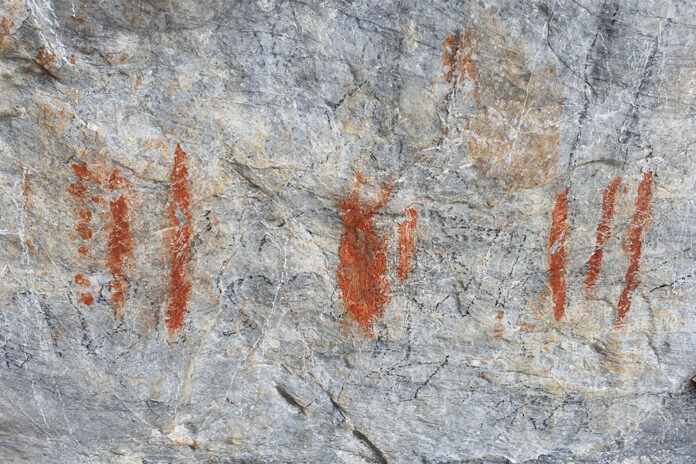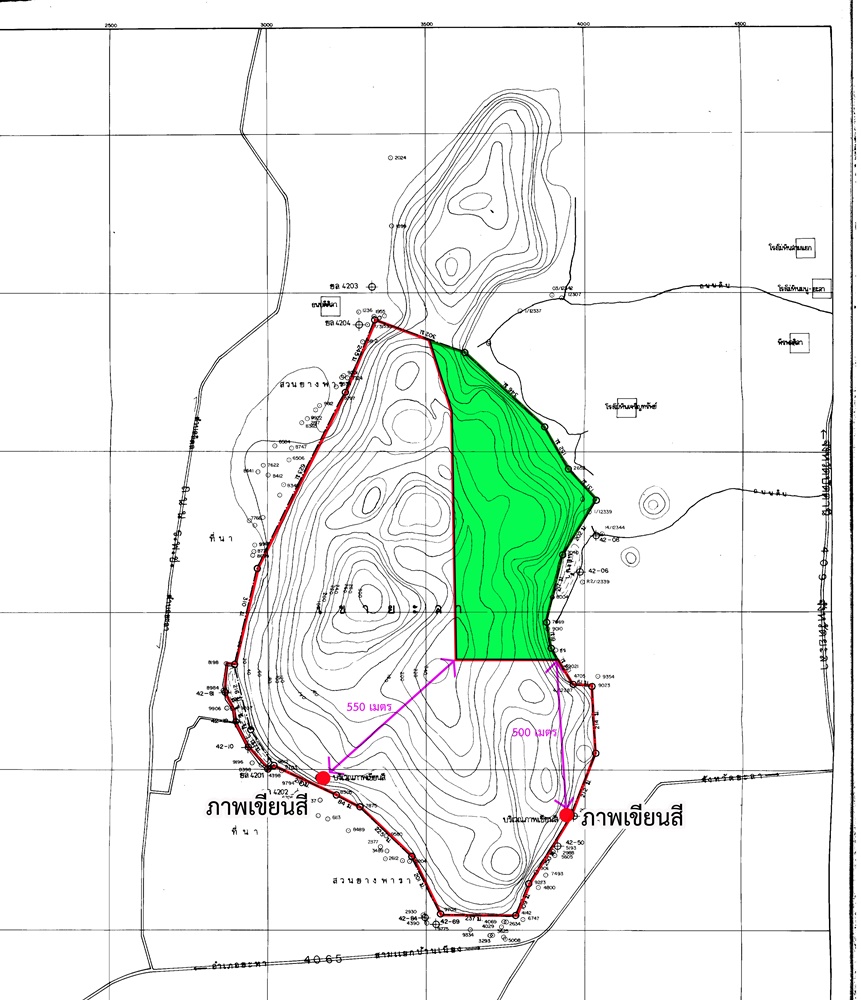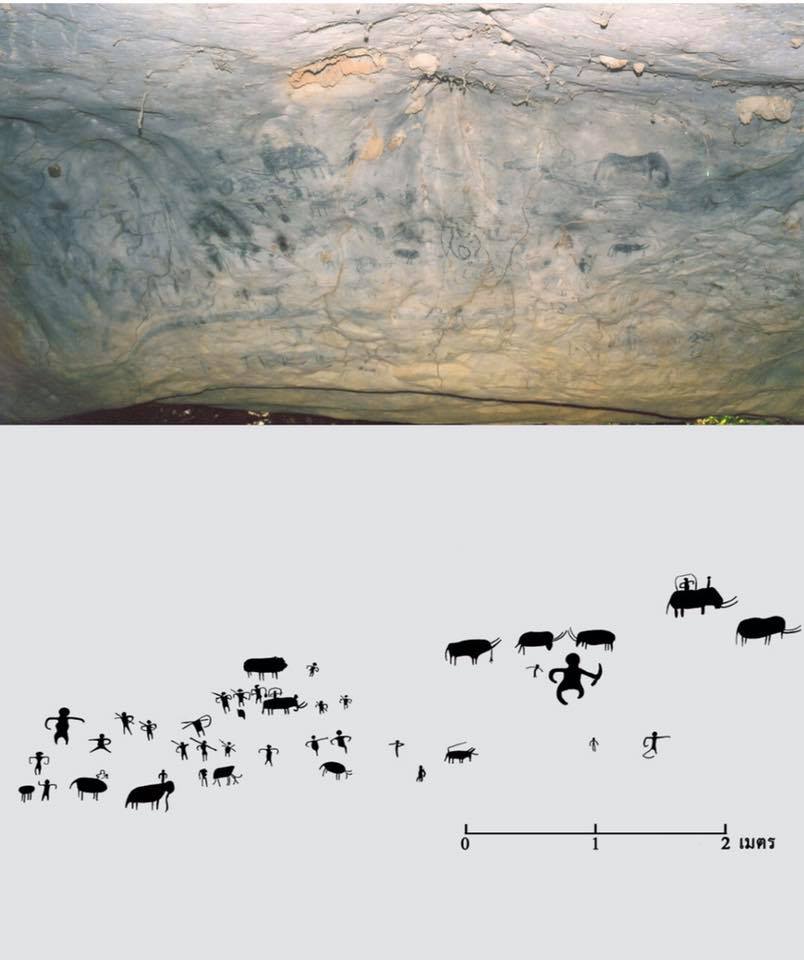
BANGKOK — The Department of Fine Arts on Friday denied the allegation that it had given up prehistoric cave paintings for a commercial mining operation.
Speaking after it emerged that the agency gave up the special protection status of a mountain in Yala where the cave paintings were located, department chief Prateep Phengtako said the paintings are still protected as an archaeological site.
“The announcement only affects the land around the paintings designated as an archaeological site, not the paintings,” Prateep said. “They are still being protected under the cultural heritage conservation law.”
Read: Gov’t Gives Up Part of Prehistoric Cave Painting Site For Mining
According to the announcement published in February, the 190 rai (30.4 hectares) area of the archaeological site at Khao Yala mountain would be given to mining operations in the area, where several quarries are already operational around the mountain.
The order cited the shortage of available excavation sites in the area, as well as the benefit of mining in reducing secessionist violence, as its rationale. The announcement caused widespread outrage on social media where many accused the government of prioritizing businesses over history.
Speaking today, Prateep insisted the cave paintings are located 500-550 meters away outside the portion of land granted to mining operations.
“We are not turning the archaeological site into a mining concession area,” he said. “That area has already been designated as a concession area more than 20 years ago, even before it was registered as an archaeological site. On top of that, the area is not where the two painting sites are located.”
Prateep also refuted the rumor that explosions from a nearby quarry had damaged some of the Khao Yala cave paintings a decade ago. He blamed the incident on a geological phenomenon.
“We found that the damage was caused by a fault line movement in 2008 and erosion of rocks resulting from penetrating underground water,” Prateep said. “It’s not related to mining operations around the mountain, but we will invite relevant stakeholders to work out the solution and address their concerns.”
Khao Yala was declared as an archaeological site in 2001 after paintings depicting human and animals, as well as evidence of human settlement, were found inside a cave there.
Archaeologists are still debating on how old these paintings could be dated back to, but they are widely believed to be prehistoric, according to a survey of the site.

















































